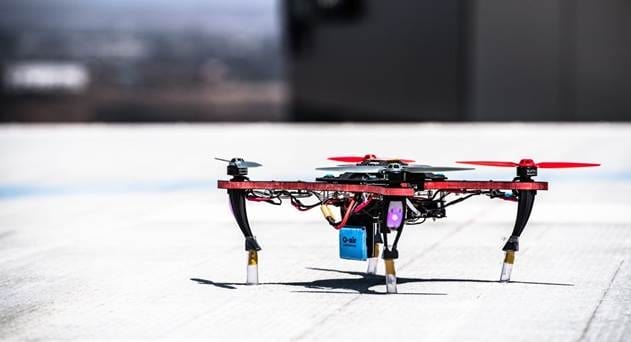Qualcomm announced that it has partnered with AT&T to test Unmanned Aircraft Systems (UAS), or drones, on commercial 4G LTE networks.
The trials will analyze how UAS can operate safely and more securely on commercial 4G LTE and networks of the future, including 5G. The research will look at elements that would impact future drone operations.
According to Qualcomm, the team will look at coverage, signal, strength and mobility across network cells and how they function in flight. The goal of the trials and ongoing research is to help enable future drone operations, such as Beyond Visual Line of Sight (BVLOS), as regulations evolve to permit them. The ability to fly beyond an operator’s visual range could enable successful delivery, remote inspection and exploration. Wireless technology can bring many advantages to drones such as ubiquitous coverage, high-speed mobile support, robust security, high reliability and quality of service (QoS).
The UAS trials will be based on the Qualcomm Snapdragon Flight drone development platform, which is designed to offer superior control and navigation capabilities. Already in use in some commercially available drones, the platform offers high fidelity sensor processing, precise localization, autonomous visual navigation and 4K videography all in an integrated, light-weight model suitable for consumers and enterprises.
Trials will begin later this month at Qualcomm Technologies’ San Diego Campus. Testing will take place at its FAA-authorized UAS Flight Center and test environment. The center contains “real world” conditions including commercial, residential, uninhabited areas and FAA controlled airspace. This facility permits testing of the use of commercial cellular networks for drones without affecting AT&T’s everyday network operations.
Matt Grob, executive vice president and chief technology officer, Qualcomm Technologies
Not only do we aim to analyze wide-scalable LTE optimization for safe, legal commercial SUAS use cases with beyond line-of-sight connectivity, but the results can help inform positive developments in drone regulations and 5G specifications as they pertain to wide-scale deployment of numerous drone use cases.
Chris Penrose, senior vice president, IoT Solutions, AT&T
With a focus on both regulatory and commercial needs, LTE connectivity has the potential to deliver optimal flight plans, transmit flight clearances, track drone location and adjust flight routes in near real-time. Solving for the connectivity challenges of complex flight operations is an essential first step to enabling how drones will work in the future.




















